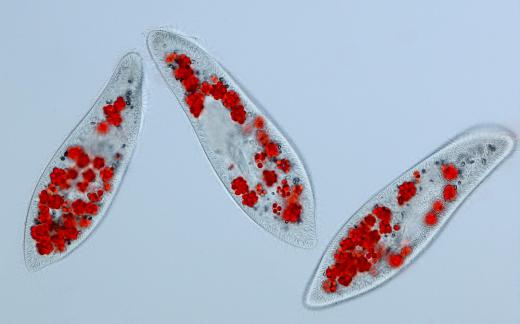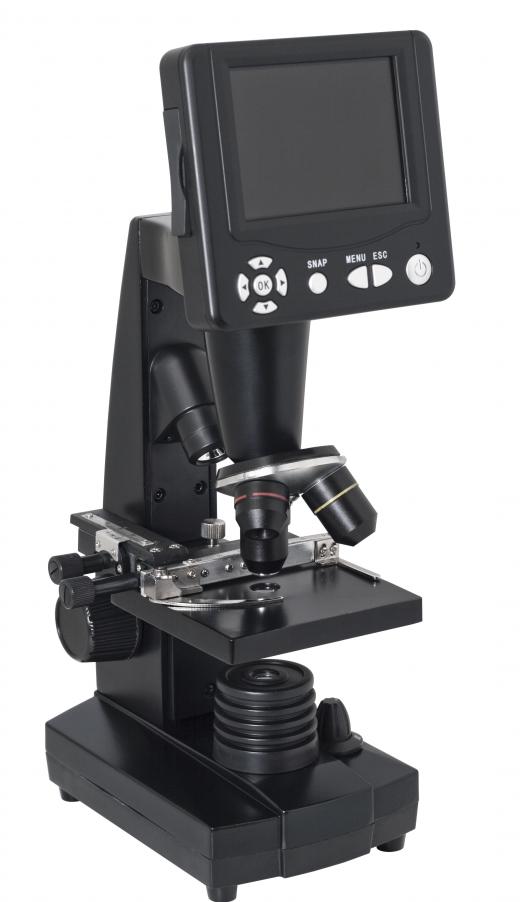What Is Microscope Photography?
Microscope photography is the science of creating and recording images of microscopic material. It is widely used in various fields of science, from forensics to archaeology. Early methods of microscope photography involved customizing photographic equipment for use with microscope lenses. In the 21st century, advances in digital photography allow greater flexibility in the creation of these images. Microscope photography is also called photomicroscopy, and the result is called a photomicrograph, or simply a micrograph.
Photography and microscopy both resulted from advances in optics and lens construction in the 17th to 19th centuries. Ingenious combinations of mirrors and magnifying lenses brought small details of an image into sharp focus, just as the human eye does. In the proper arrangements, such lenses and mirrors could magnify the very distant, as in telescopes, or the very small. In the 1800s, pioneering photographers learned how to permanently record images on metal or glass surfaces, called plates, through chemical processes. Scientists soon realized they could employ photography to record the images they viewed through their microscopes.

The earliest microscope photography recorded microscopic images directly onto photographic plates. This was achieved by using adapter rings to attach the microscope to the camera lens. In some cases, the camera lens was removed, allowing the microscope to function as the lens itself. In the 20th century, special cameras were developed to record micrographs on photographic film. The standard photo processing techniques of the time required immersing the film in developing chemicals, causing some delay before the image could be analyzed.

Digital photography techniques have changed both microscopy and microscope photography. Modern micrographs can display microscopic material in real-time, while it is still under the microscope. Video recording and integration with computer systems is also possible, which can help when detailed analysis of an image is necessary. Crime labs use such micrographs while searching for trace evidence from crime scenes. This is probably the most well-known use of photomicroscopy, thanks to TV crime dramas.

Microscope photography has other applications, however, and has resulted in advances in numerous scientific fields. For example, geologists examine microscopic soil samples for evidence of atmospheric and environmental conditions in various historic eras. Medicine and immunology also depend on micrographs for research, diagnosis and treatment of disease. Electron microscopes use electrons rather than light to examine material, including cellular and molecular structures, at far greater magnifications than ordinary microscopes. The images created by electron microscopes are also called micrographs.
AS FEATURED ON:
AS FEATURED ON:













Discuss this Article
Post your comments